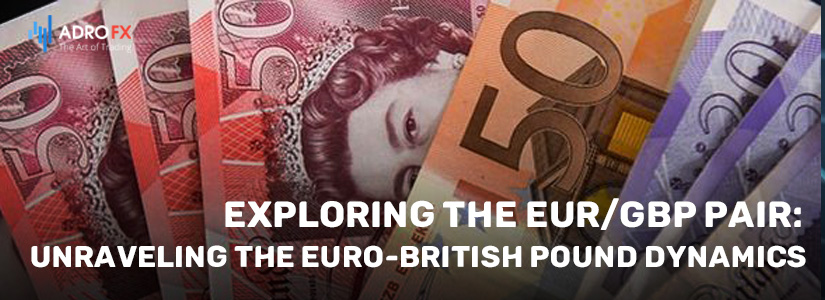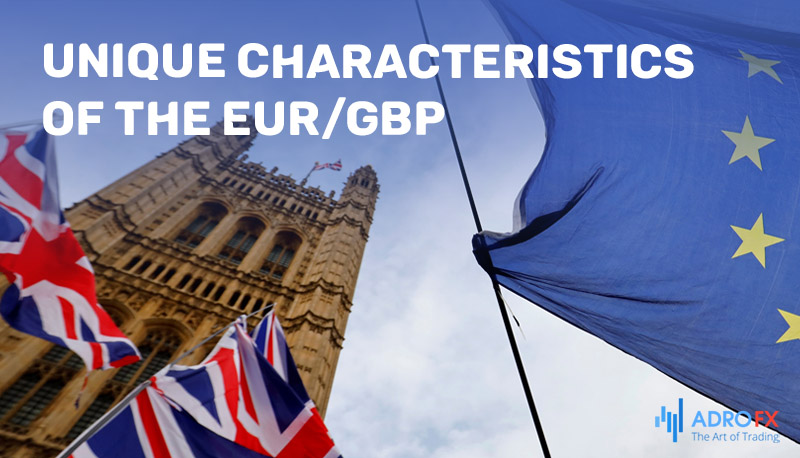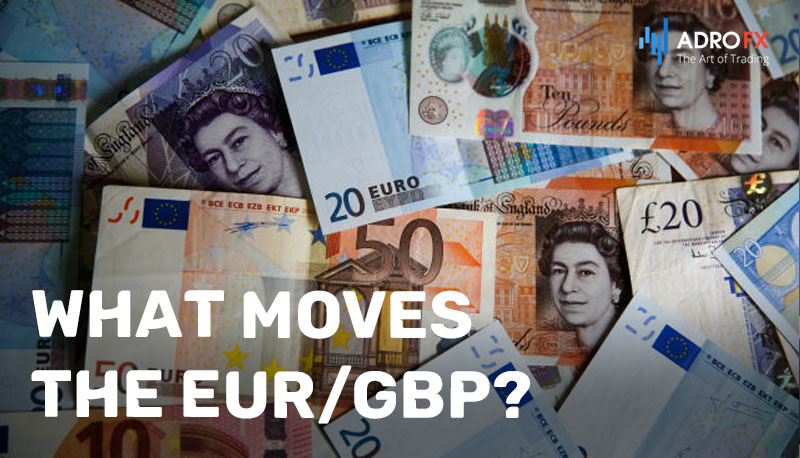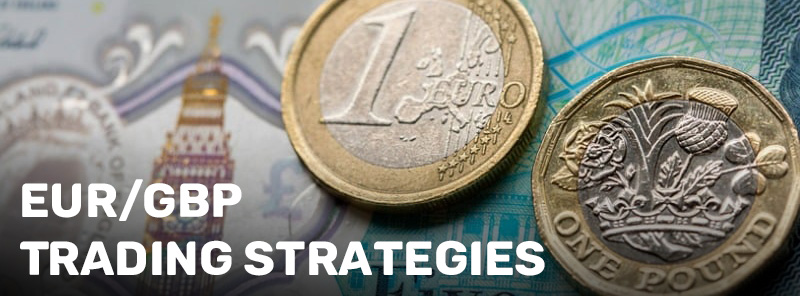Exploring the EUR/GBP Pair: Unraveling the Euro-British Pound Dynamics

The EUR/GBP pair, often referred to as the Euro-British Pound pair, is a crucial entity within the world of forex trading. This pairing represents the exchange rate between the Euro (EUR), the official currency of the Eurozone, and the British Pound (GBP), the currency of the United Kingdom. As two of the most influential economies on the global stage, the fluctuations in the EUR/GBP exchange rate can provide valuable insights into the economic health and geopolitical dynamics of both regions.
In this article, we will explore the intricacies of the EUR/GBP pair, including its characteristics, factors influencing its movements, and trading strategies. Whether you are a seasoned forex trader or a newcomer to the world of currency trading, understanding the fundamentals of the EUR/GBP pair is essential for successful day trading endeavors.
What Is the EUR/GBP pair?
The EUR/GBP pair stands at the crossroads of international finance, encapsulating the interaction between the euro and the British pound within the realm of forex trading. This currency pairing holds significant allure due to the pivotal roles played by both the United Kingdom and the European Union in the global market. Indeed, the EUR/GBP pair frequently takes its place as one of the premier minor forex pairs, reflecting the complex interplay of economic forces.
Within this pairing, the euro takes center stage as the base currency, while the British pound assumes the role of the quote currency. To decipher this, consider a scenario where the EUR/GBP price reads 0.860 – denoting that 1 euro commands a value of 86 pounds.
Elevating its appeal further, the EUR/GBP pair boasts exceptional liquidity. This robust liquidity owes its existence to the substantial trading volume flowing between the United Kingdom and the European Union. A prime example of this interconnectedness lies in the year 2020, when over 80% of the UK's trade volume was intricately tied to European nations, with stalwarts like Germany and France assuming prominent positions in the trading landscape.

Unique Characteristics of the EUR/GBP
The EUR/GBP pair is widely traded in the foreign exchange (forex) market and has its own unique characteristics that traders and investors should consider. Here are some of the unique characteristics of the EUR/GBP currency pair:
- Brexit Influence
One of the most significant factors affecting the EUR/GBP exchange rate is the ongoing process of Brexit. The decision by the United Kingdom to leave the European Union had a profound impact on the relationship between the two economies and their respective currencies. The negotiation process, trade agreements, and economic conditions in both regions can lead to significant fluctuations in the exchange rate.
- Economic Indicators
Traders and investors often monitor economic indicators from both the Eurozone and the United Kingdom to gauge the health of their economies. Key indicators include GDP growth, unemployment rates, inflation rates, and manufacturing data. Changes in these indicators can impact the perceived strength of each currency and subsequently affect the EUR/GBP exchange rate.
- Interest Rates and Monetary Policy
The interest rate decisions and monetary policy statements from the European Central Bank (ECB) and the Bank of England (BoE) can greatly influence the EUR/GBP exchange rate. Higher interest rates in one region relative to the other can attract investors seeking better returns, potentially leading to currency appreciation.
- Political Developments
Political events and developments in both the Eurozone and the UK can impact the EUR/GBP exchange rate. Elections, policy changes, and geopolitical tensions can create uncertainty and affect market sentiment, leading to shifts in the exchange rate.
- Cross-Rate Dynamics
Since both the Euro and the British Pound are major currencies, the EUR/GBP exchange rate can be influenced by factors affecting both the EUR/USD and GBP/USD pairs. Traders often analyze these cross-rate dynamics to gain insights into potential EUR/GBP movements.
- Correlation with Risk Sentiment
The EUR/GBP exchange rate can sometimes exhibit a correlation with global risk sentiment. During periods of increased risk aversion, traders may seek safe-haven assets like the US Dollar (USD), which can impact both the Euro and the British Pound against the USD and, subsequently, the EUR/GBP pair.
- Trade and Investment Ties
The economic relationship between the Eurozone and the UK can influence the exchange rate. Trade agreements, investment flows, and economic interdependence can create linkages that impact the EUR/GBP rate.
- Technical Analysis
Traders often use technical analysis to identify trends and potential entry/exit points in the market. Common technical indicators and chart patterns can provide insights into potential price movements for the EUR/GBP pair.
Remember that the foreign exchange market is dynamic and can be influenced by a wide range of factors. Traders and investors need to stay informed about developments in both the Eurozone and the UK, as well as global economic and geopolitical events, to make informed decisions when trading the EUR/GBP currency pair.

What Moves the EUR/GBP?
The EUR/GBP currency pair, like any other forex pair, is influenced by a variety of factors that drive its movements. These factors can be broadly categorized into fundamental and technical factors. Here are the main factors that move the EUR/GBP exchange rate:
Economic Indicators and Data Releases:
- GDP Growth: Higher economic growth typically leads to a stronger currency. Positive GDP data in one currency's region relative to the other can result in currency appreciation.
- Inflation Rates: Central banks often adjust interest rates based on inflation levels. Higher inflation can lead to expectations of interest rate hikes and potentially strengthen the currency.
- Interest Rates: Differences in interest rates between the European Central Bank (ECB) and the Bank of England (BoE) can lead to capital flows and impact the exchange rate.
- Employment Data: Unemployment rates and job creation figures provide insights into the health of an economy and can affect currency values.
Monetary Policy:
- Central Bank Decisions: The decisions made by the ECB and the BoE regarding interest rates, quantitative easing programs, and forward guidance can have a significant impact on the exchange rate.
- Policy Statements: Statements made by central bank officials in press conferences or speeches can provide clues about future policy direction and influence the currency's value.
Political and Geopolitical Developments:
- Brexit: Developments related to the ongoing process of the UK's departure from the European Union can cause significant volatility in the EUR/GBP pair.
- Political Stability: Political uncertainty or instability can impact investor confidence and influence the exchange rate.
- Trade Agreements: Changes in trade agreements between the UK and the EU or other countries can impact economic prospects and the currency pair.
Market Sentiment:
- Risk Appetite: During periods of heightened risk aversion, investors may seek safe-haven currencies like the US Dollar (USD) or the Japanese Yen (JPY), which can impact the EUR/GBP exchange rate.
- Market Speculation: Traders' expectations about future economic and political developments can lead to short-term movements in the exchange rate.
Technical Factors:
- Technical Analysis: Traders use various technical indicators, chart patterns, and trend analysis to make trading decisions, which can influence short-term price movements.
Economic and Financial Events:
- Key Data Releases: Events such as central bank meetings, GDP announcements, and employment reports can lead to short-term volatility in the currency markets.
- Market Surprises: Unexpected outcomes or deviations from consensus forecasts in economic data releases can cause abrupt movements in the exchange rate.

EUR/GBP Trading Strategies
Trading strategies for the EUR/GBP currency pair, like any other forex pair, can vary based on the trader's goals, risk tolerance, and market conditions. Here are a few trading strategies that traders commonly use when dealing with the EUR/GBP pair:
Trend Following Strategy
- This strategy involves identifying and trading in the direction of the prevailing trend.
- Traders use technical indicators such as moving averages, trendlines, and the Relative Strength Index (RSI) to identify trends and potential entry/exit points.
- For example, a trader might enter a long position (buy) when the EUR/GBP pair is in an uptrend and shows signs of continued strength.
Range Trading Strategy
- In this strategy, traders look for price ranges or support and resistance levels where the currency pair is likely to remain within a specific range.
- Traders can buy near support and sell near resistance, aiming to profit from price oscillations within the range.
- This strategy is suitable when the EUR/GBP pair is trading sideways without a clear trend.
Breakout Strategy
- Breakout traders aim to capitalize on significant price movements that occur when the price breaks out of a well-defined range or consolidation phase.
- Traders identify key support and resistance levels and place trades in the direction of the breakout.
- Stop-loss orders are often used to manage risk in case the breakout fails.
News-Based Strategy
- Economic data releases, central bank announcements, and geopolitical developments can lead to significant market movements.
- Traders following this strategy closely monitor news and events and take advantage of volatility generated by unexpected outcomes or changes in market sentiment.
Carry Trade Strategy
- The carry trade strategy involves taking advantage of interest rate differentials between the two currencies in the pair.
- Traders go long the currency with the higher interest rate and short the currency with the lower interest rate to earn the interest rate differential.
- This strategy requires careful consideration of central bank policies and potential risks.
Correlation Strategy
- Traders can analyze the correlation between the EUR/GBP pair and other related currency pairs, such as EUR/USD and GBP/USD.
- By understanding how these pairs move in relation to each other, traders can make informed trading decisions.
Event-Driven Strategy
- Events like Brexit negotiations, policy decisions, and economic releases can create short-term opportunities.
- Traders closely follow such events and look for setups that align with the anticipated market reaction.
Hedging Strategy
- Traders and businesses use hedging strategies to protect against adverse currency movements.
- For instance, a company with exposure to the EUR/GBP exchange rate might use derivatives to hedge its currency risk.
Algorithmic Trading
- Some traders use algorithms and automated trading systems to execute trades based on predefined criteria, taking advantage of short-term price movements.
Conclusion
In summary, the EUR/GBP pair holds a pivotal role in forex trading, representing the exchange rate between the Euro and the British Pound. This dynamic pairing provides insights into the economic health and geopolitical forces of both the Eurozone and the United Kingdom.
With the Euro as the base currency and the British Pound as the quote currency, the EUR/GBP pair encapsulates the global financial interplay between these two major economies. Notably, Brexit's influence, economic indicators, and central bank policies contribute to its unique characteristics.
Trading strategies for the EUR/GBP pair encompass trend following, breakout approaches, and algorithmic methods, catering to various trader preferences. However, the forex market's ever-changing nature demands adaptability and continuous awareness of economic shifts.
Ultimately, understanding the EUR/GBP pair is vital for traders seeking to interpret economic dynamics, react to geopolitical shifts, and capitalize on trading opportunities in the dynamic forex landscape.

About AdroFx
Established in 2018, AdroFx is known for its high technology and its ability to deliver high-quality brokerage services in more than 200 countries around the world. AdroFx makes every effort to keep its customers satisfied and to meet all the trading needs of any trader. With the five types of trading accounts, we have all it takes to fit any traders` needs and styles. The company provides access to 115+ trading instruments, including currencies, metals, stocks, and cryptocurrencies, which make it possible to make the most out of trading on the financial markets. Considering all the above, AdroFx is the perfect variant for anyone who doesn't settle for less than the best.









